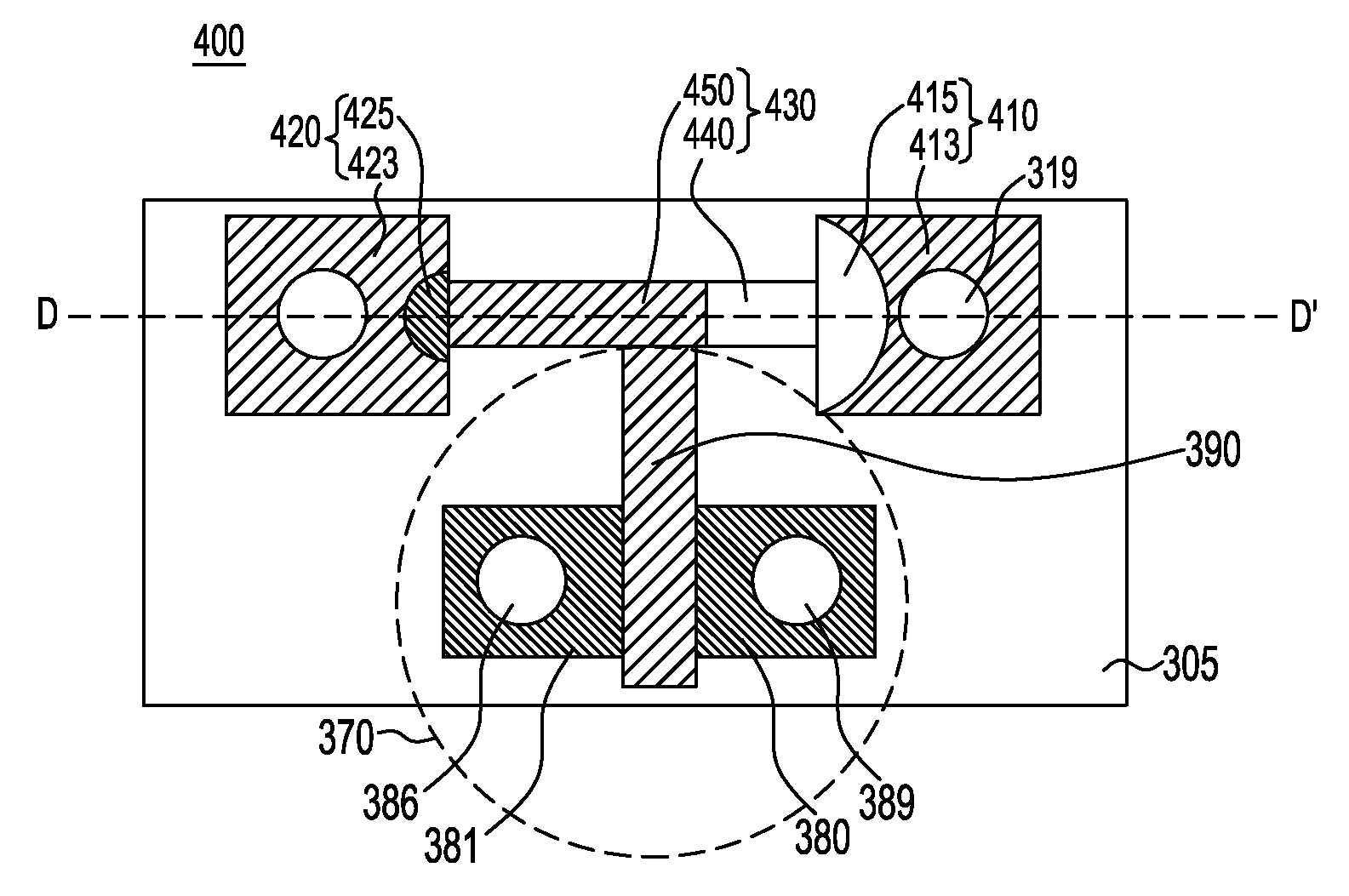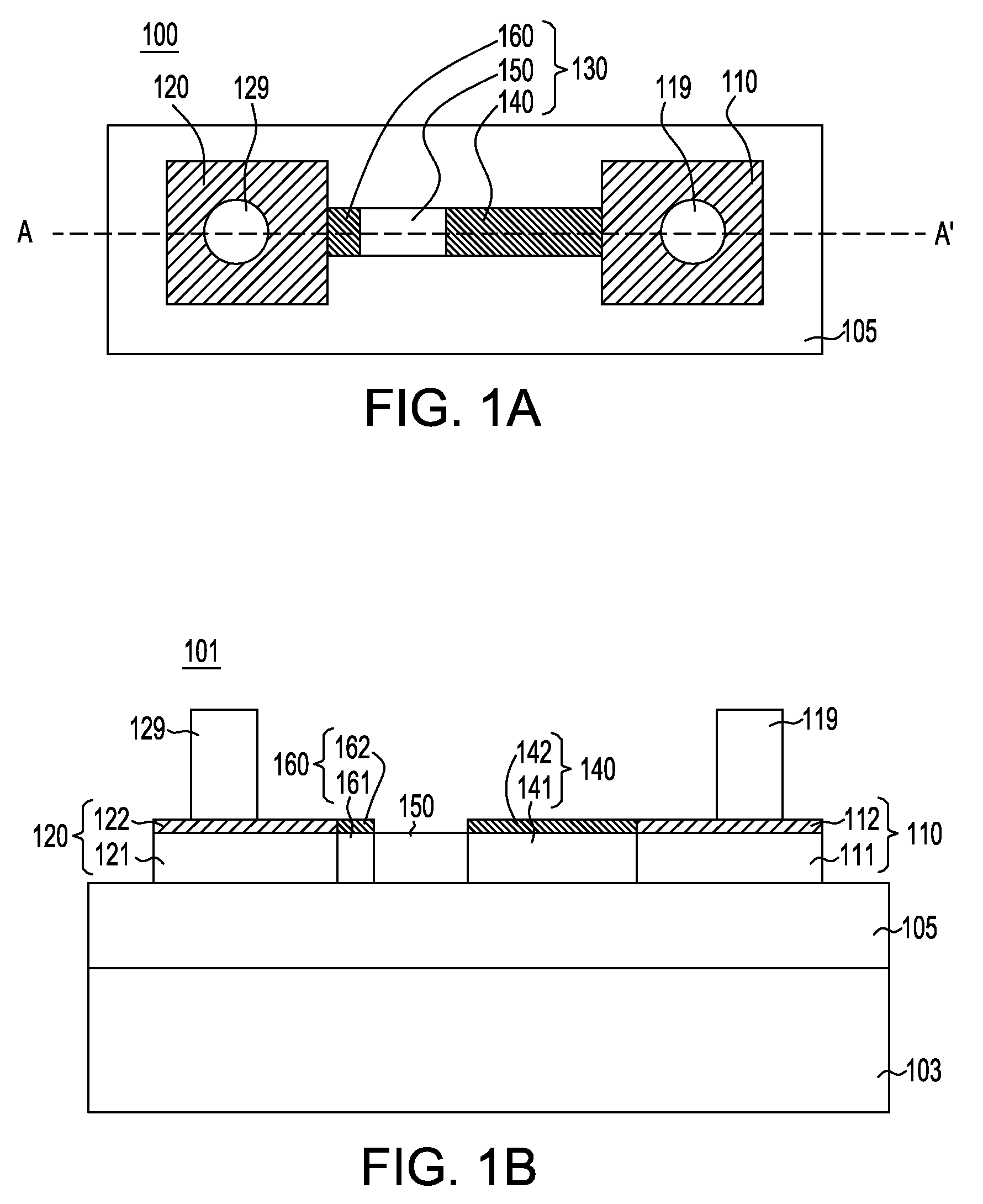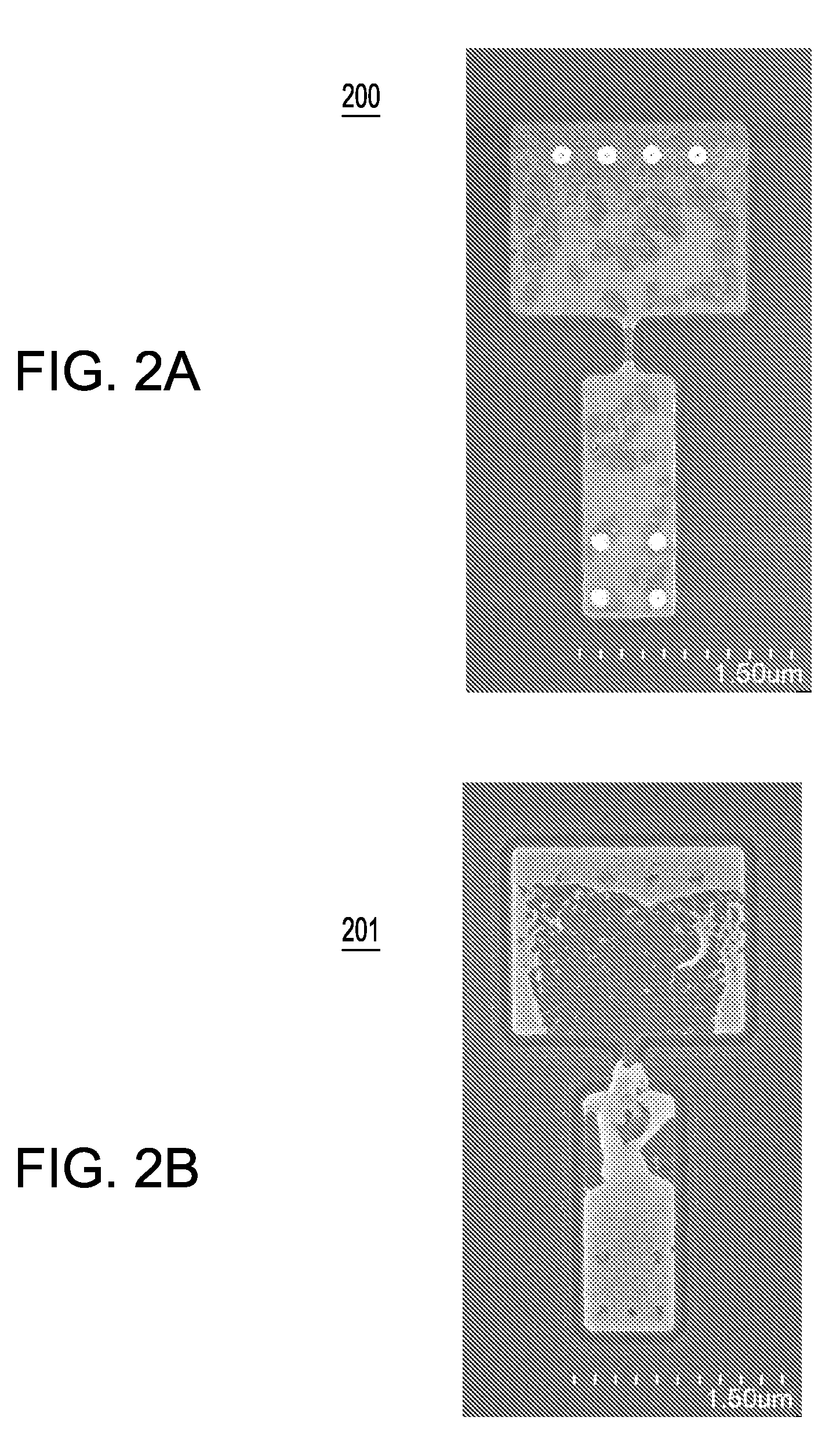Electrical antifuse with integrated sensor
an anti-fuse and integrated technology, applied in the direction of emergency protective devices, basic electric elements, heating/cooling contact switches, etc., can solve the problems that anti-fuses in the prior art typically require dielectric breakdown, and achieve the effect of improving the reliability of anti-fuse programming
- Summary
- Abstract
- Description
- Claims
- Application Information
AI Technical Summary
Benefits of technology
Problems solved by technology
Method used
Image
Examples
first embodiment
[0033]Referring first to FIGS. 1A and 1B, there is shown an intact antifuse structure 100 according to this invention where an antifuse link 130 is adjoined by a cathode 110 on one side and adjoined by an anode 120 on another side. Preferably, the antifuse link 130, cathode 110, and anode 120 are formed on a shallow trench isolation 105 formed as an insulator on a semiconductor substrate 103. The antifuse link 130 comprises a portion 150 without conducting material and two conducting material containing portions. A first conducting material containing portion 140 of the antifuse link 130 comprises a first volume 141 with a semiconductor material and a second volume 142 with a conducting material. A second conducting material containing portion 160 of the antifuse link 130 comprises a first volume 161 with semiconductor material and a second volume 162 with the conducting material. The first portion 140 of the antifuse link 130 adjoins the cathode 110 and the second portion 160 of th...
second embodiment
[0045]In FIG. 4A, an intact integrated antifuse 300 with integrated sensing device 370 according to this invention is shown. A cross-sectional view 301 along the line B-B′ in FIG. 4A is shown in FIG. 4B and another cross-sectional view 302 along the line C-C′ in FIG. 4A is shown in FIG. 4C. An antifuse link 330 is adjoined by a cathode 310 on one side and adjoined by an anode 320 on another side. A sensing device 370, that is, a transistor, is placed adjacent to the antifuse link 330 such that the gate 390 of the sensing device 370 is attached to the antifuse link 330. Preferably, the antifuse link 330, cathode 310, and anode 320 are formed on a shallow trench isolation 305 formed as an insulator on a semiconductor substrate 303.
[0046]The antifuse link 330 comprises a portion 350 without conducting material and two conducting material containing portions. A first conducting material containing portion 340 of the antifuse link 330 comprises a first volume 341 with semiconductor mater...
third embodiment
[0057]According to this invention, integrated antifuses 820 are wired in a two-dimensional integrated antifuse array 800 and share programming transistors and sensing circuitry in the periphery. Each of the integrated antifuses 820 has one antifuse structure 840 and one sensing device 860. The cathode 842 of each antifuse structure 840 is connected to one of the column antifuse wiring lines 835 that pass by the same antifuse structure 840. The anode 841 of each antifuse structure 840 is connected to one of the row antifuse wiring lines 845 that pass by the same antifuse structure 840. The drain 861 of each sensing device 860 is connected to one of the sensing device wiring lines 875. The source 862 of each sensing device 860 is connected to one of the column grounding bus 859 and is eventually connected to the ground.
[0058]Programming of the antifuses in the third embodiment of this invention proceeds as follows. All column antifuse wiring lines 835 and all row antifuse wiring lines...
PUM
 Login to View More
Login to View More Abstract
Description
Claims
Application Information
 Login to View More
Login to View More - R&D
- Intellectual Property
- Life Sciences
- Materials
- Tech Scout
- Unparalleled Data Quality
- Higher Quality Content
- 60% Fewer Hallucinations
Browse by: Latest US Patents, China's latest patents, Technical Efficacy Thesaurus, Application Domain, Technology Topic, Popular Technical Reports.
© 2025 PatSnap. All rights reserved.Legal|Privacy policy|Modern Slavery Act Transparency Statement|Sitemap|About US| Contact US: help@patsnap.com



